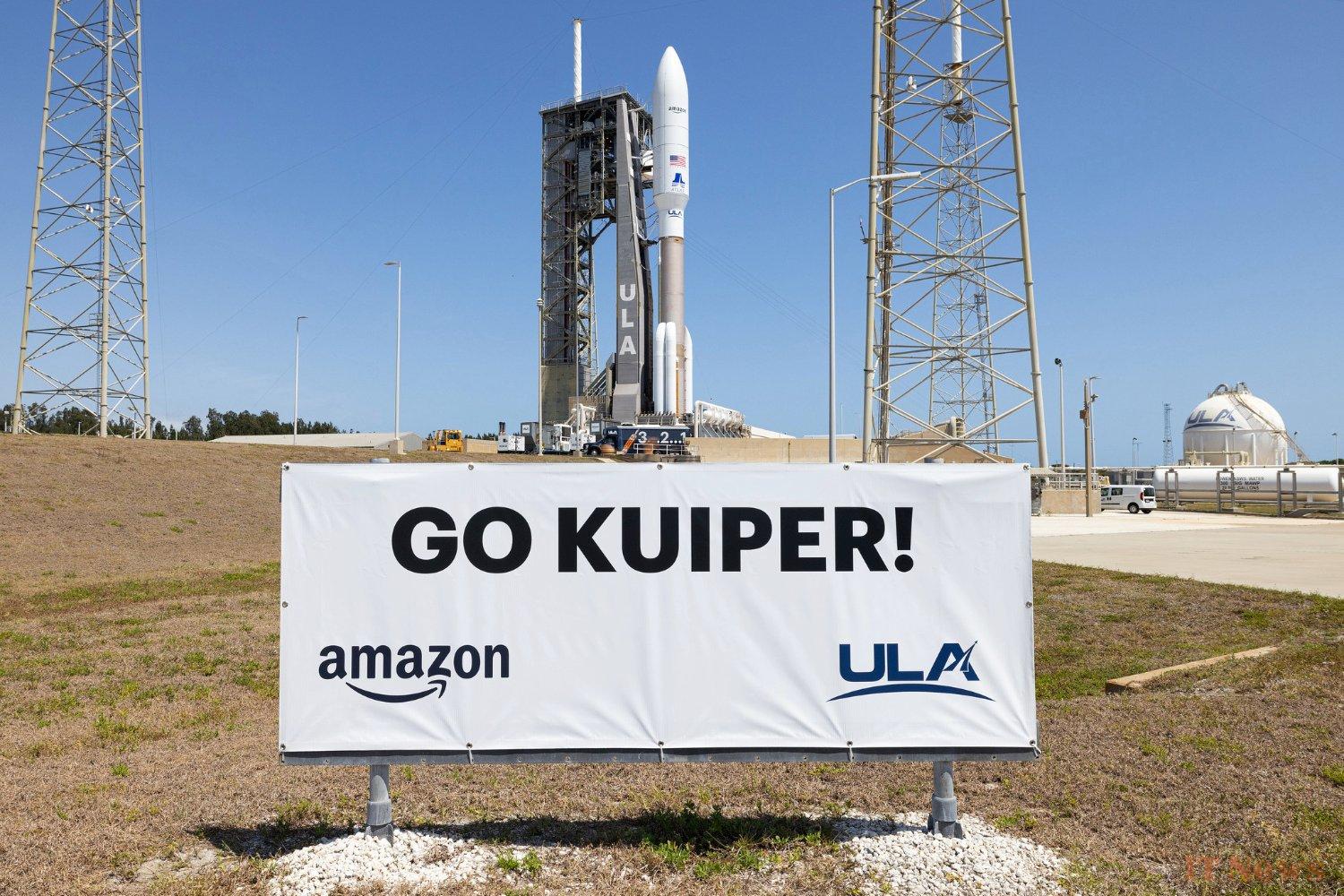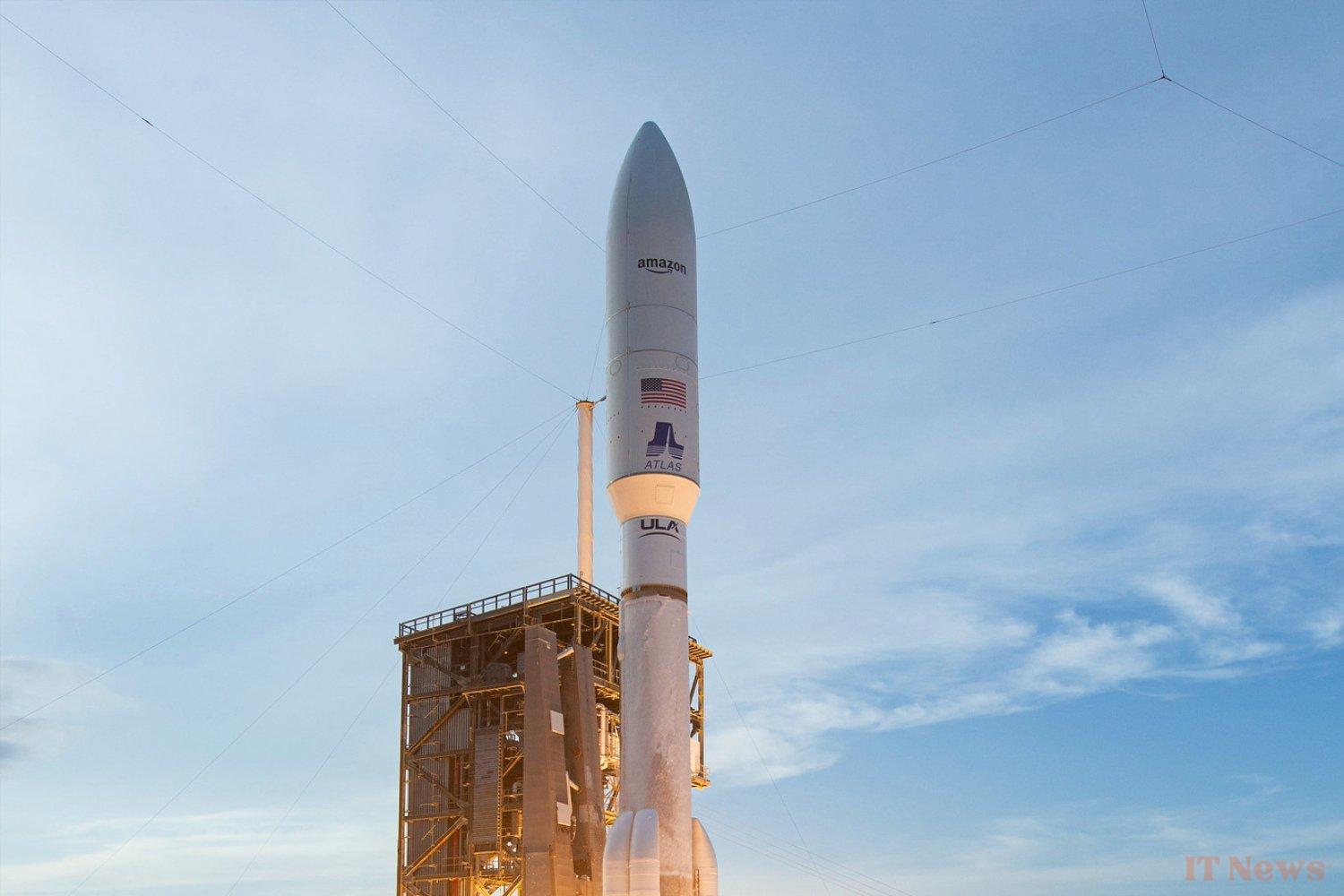The Kuiper Project is launched. Six years after Amazon founder Jeff Bezos announced it, it's finally in space, with the departure of the first batch of satellites into orbit. Amazon successfully launched 27 satellites using an Atlas V rocket from the United Launch Alliance, a company (for sale) with which the e-commerce giant signed a contract to bridge the gap between Cape Canaveral and low Earth orbit, at an altitude of 450 kilometers. Further Kuiper launches will be carried out by Blue Origin, another Jeff Bezos company, as well as by European Arianespace, with the Ariane 5 rocket.
The Kuiper satellites will not remain at an altitude of 450 kilometers. After being released into orbit, they will be placed at an altitude of 630 kilometers, where their operational altitude is. "While the satellites complete the orbiting process, we will focus on our ultimate mission objective: providing connectivity end-to-end network," Amazon representatives wrote in a pre-launch statement. Network coverage is expected by the end of this year.
A first launch for Kuiper was already carried out before the one on Monday, April 28 at 7:01 p.m. (local time). But it was a test flight, with prototype satellites. It was scheduled to take place in October 2023. Since then, Amazon's plans for its satellite internet network have been delayed. While Kuiper has carried out On its first constellation deployment mission, Starlink has, since the beginning of the year, launched no fewer than 31 batches of new Starlink satellites into orbit.
SpaceX's internet network already consists of more than 7,200 stars in orbit. A number twice that of what Kuiper is aiming for at the end of its first phase, which is to have 3,200 satellites. Three hours before the launch of the Atlas V rocket on behalf of Amazon, SpaceX launched a rocket. A second launch took place no less than four hours later, enough to demonstrate the company's launch frequency.
Kuiper, cutting-edge satellites lagging behind
Amazon nevertheless insists that its satellites are more advanced than Starlink's, including on the issue of light pollution. "The satellites are covered in a dielectric mirror film unique to Kuiper that scatters reflected sunlight to make them less visible to astronomers on the ground," Kuiper officials explained. On the technical side, they added: "We have improved the performance of every system and subsystem on board, including phased array antennas, processors, solar panels, propulsion systems, and inter-satellite optical links.
Originally, the launch of the first batch of satellites was scheduled for April 9. Amazon canceled this attempt due to weather conditions. Kuiper then had to secure a launch slot on the Eastern Range and the launch pad operated by the US Air Force. In the meantime, the news The focus of the debate around Amazon's satellite internet network has been on the company's struggle to produce its satellites. Bloomberg reported that a year after the launch of production of these satellites in Seattle, only a handful of units had been produced. Amazon has, however, set a goal: to put 1,600 devices into orbit before the summer of 2026.




0 Comments